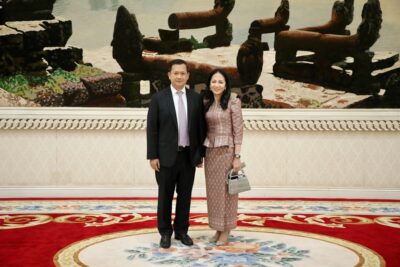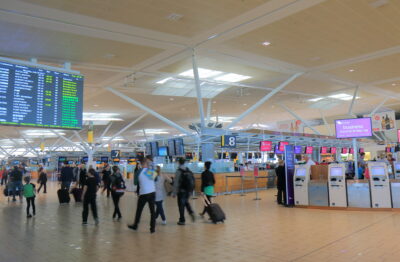5 reasons why investors still bet on Malaysian property
The road to recovery is paved with improving fundamentals and buying sentiment

One of Southeast Asia’s rapidly urbanising real estate markets has had its fair share of challenges in the last couple of years, but there is still cause for celebration for Malaysia. The country is on the road to recovery as investors and end-users are presented with more affordable and quality property options.
“While asking prices for Malaysian residential properties have been on a downward trend despite increasing positive sentiment, a recovery for the Malaysian property market looks more and more likely in 2019 given the initiatives we are seeing from all stakeholders,” commented Sheldon Fernandez, country manager for the Malaysian branch of PropertyGuru Group.
We’ve enumerated the top five reasons why Malaysia’s property sector should be on every investor’s radar in 2019:
1. Better economy and more jobs
Unemployment rate is currently low, and more income earners are ready to get on the property ladder. The unemployment rate as of September 2018 stood at 3.3 percent, just a slight decline from the same month in 2017 (3.4 percent).
Last year the World Bank raised Malaysia’s GDP to 5.9 percent from 5.4 percent previously. In September 2018, the ringgit hit USD/MYR4.13, compared with USD/MYR 4.06 in December 2017.
In the year through October 2018, the Malaysia Consumer Price Index (CPI) increased by 0.6 percent. While this is nothing compared to the increment in CPI of 4.3 percent between September 2016 and September 2017, the change between 2017 and 2018 indicates that inflation is indeed stabilising.
2. Consumers are willing to spend
Around 42 percent of property seekers in Malaysia expressed satisfaction with the overall real estate climate when PropertyGuru surveyed buyer’s sentiment in H1 2018 –– and there’s an interest to buy properties.
Year-on-year asking prices throughout Malaysia had dropped by 2.5 percent by the third quarter of 2018 as the market adjusted to current conditions, according to the latest PropertyGuru Malaysia Property Index.
The competitive investment area of Johor is one of the exceptions, with asking prices in the state recording a year-on-year increment of 2.7 percent in the year to Q2 2018.
3. Wider access to financing
More consumers are applying for housing loans, despite the tightening of lending guidelines by the country’s central bank over the last year. Around 71 percent of loan borrowers in Malaysia are first-time owners of properties priced below MYR500,000, according to Bank Negara.
The first half of 2018 saw banks approving MYR74.1 billion in house financing to about 175,000 borrowers.
Seventy-seven percent or majority of the approved housing loans went to the purchase of residential properties in Selangor, Kuala Lumpur, Johor and Penang – areas that received a high number of citations at the 2018 Asia Property Awards (Malaysia) for quality condominium, landed and mass market properties.
4. Conveniently located properties
As Malaysian buyers and expat renters prioritise convenience and accessible location, transit-oriented development (TOD) properties are likely to enjoy a strong year ahead.
The upshot of all these is a stronger shift in rental demand for properties that are strategically located in proximity to or within easy access of MRT and LRT lines, according to the PropertyGuru Malaysia Market Outlook, which found commuters tend to be younger, working-class, or middle-income Malaysians.
Budget 2019 has offered various incentives in aid of public transport ridership. These include a MYR20-million project with Prasarana Malaysia Berhad to institute an unlimited public transportation pass for the RapidKL rail and bus networks and plans to expand the free GoKL bus service, which will receive MYR20 million in funding.
On the contrary, the incentives may have the unintended corollary of increasing supply to an excess, dampening demand, but rental rates for properties are likely to hold.
5. Downsizing without sacrificing lifestyle possibilities
More Malaysian developers are now building smaller units, ranging between 450 and 840 square feet, mainly to keep costs down, and selling prices low for their high-rises in hopes of sparking more buying enthusiasm. Some property seekers may be willing to overlook the sizes of their units in exchange for high-quality facilities, common areas, and retail amenities.
“We have seen this trend since 2016,” PropertyGuru Malaysia noted in its GuruView predictions for 2019. “But they will not compromise on lifestyle. Hence, facilities and retail experiences, as well as seamless connectivity will be key determinants in winning over home buyers, especially Gen-Y and millennial.”
Are you betting on Malaysian real estate? Be sure to nominate your favourite developers and properties for the 2019 PropertyGuru Asia Property Awards (Malaysia) until 15 February here: http://www.asiapropertyawards.com/nomination/malaysia/
Recommended
Why everyone is moving to Selangor and Johor: Malaysia’s real estate comeback
Malaysia’s upturn in fortunes is especially prevalent in secondary destinations such as Selangor and Johor
Penang’s silicon boom: How the US-China tech war is supercharging local real estate
Penang’s booming semiconductor industry has created ripples within the local real estate sector
New leader, new opportunities: How Hun Manet is shaking up Cambodia’s real estate game
Hun Manet is overseeing decent economic growth and widening access to the country’s real estate market for foreigners
Singapore embraces inclusive housing reforms amid resilient demand
The Lion City’s regulatory strength continues to exert appeal for international investors








